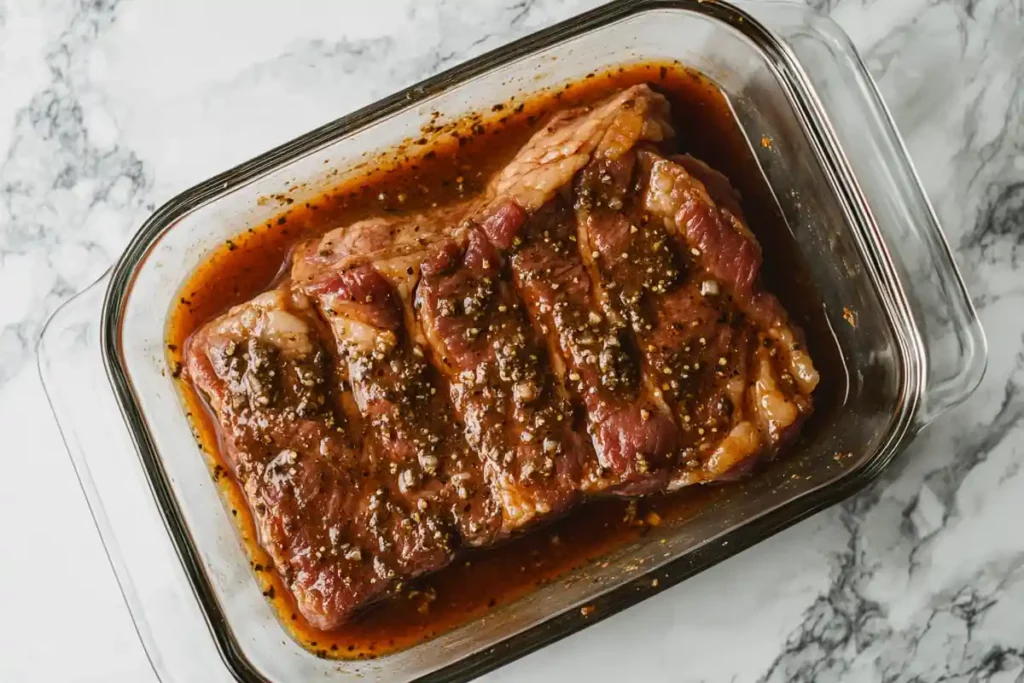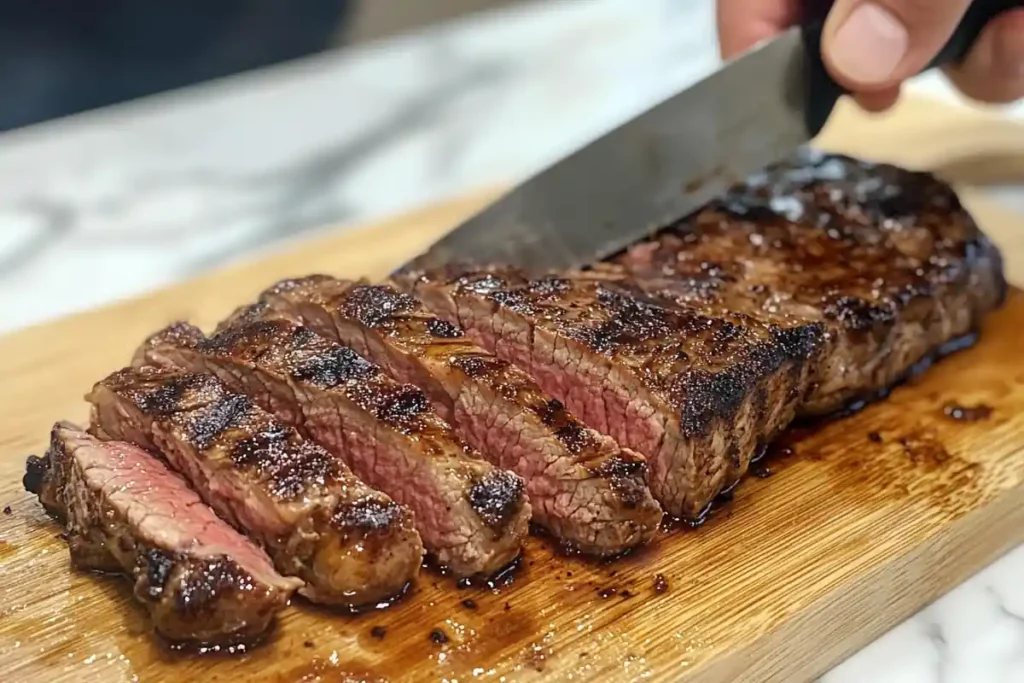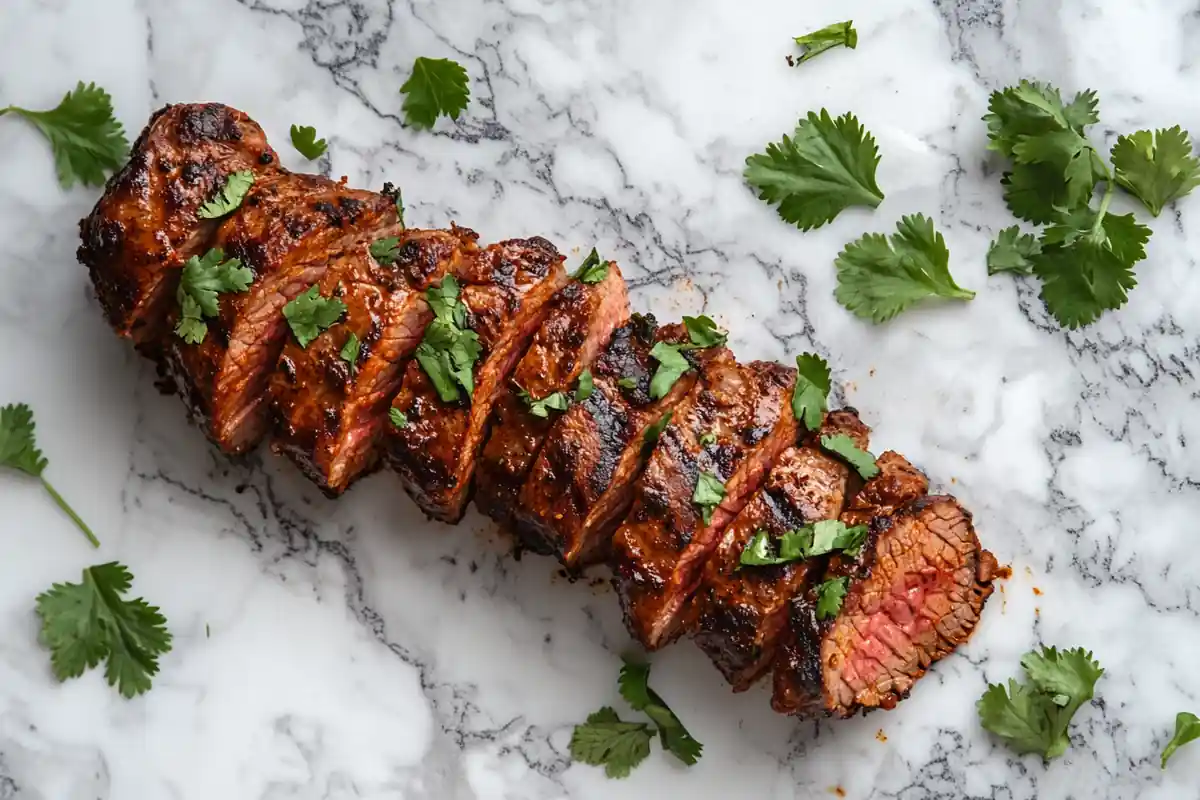Master this flavorful chipotle steak recipe. Learn, therefore, the secrets to tender, smoky, and delicious results.
This article will explore, consequently, a detailed chipotle steak recipe. We will delve into the essential ingredients, preparation techniques, and cooking methods needed to recreate that signature smoky, spicy flavor at home. Therefore, whether you’re a seasoned cook or a beginner, this guide will provide you with everything you need to create a delicious chipotle steak every time. Furthermore, we will explore various aspects of the recipe, from choosing the right cut of meat to serving suggestions.
Table of contents
- Understanding the Flavors of Chipotle Steak
- Selecting the Right Cut of Steak for Your Chipotle Steak Recipe
- The Marinating Process for Chipotle Steak
- Cooking Methods for Chipotle Steak
- Letting Your Chipotle Steak Rest
- Slicing Your Chipotle Steak
- Serving Suggestions for Chipotle Steak
- Conclusion: Enjoying Your Homemade Chipotle Steak
- Frequently Asked Questions About Chipotle Steak
Understanding the Flavors of Chipotle Steak
The Key Components of a Chipotle Marinade
A chipotle steak recipe relies heavily on the marinade. Therefore, understanding the core components is vital. The marinade will, undoubtedly, infuse the steak with complex flavors.
- Chipotle Peppers: Chipotle peppers in adobo sauce are the foundation. They provide smoky, spicy, and, also, slightly sweet notes. This is, indeed, the most important ingredient in a chipotle steak recipe.
- Adobo Sauce: The adobo sauce itself adds a layer of flavor. Also, it provides tanginess, along with extra depth and complexity.
- Garlic: Fresh garlic, furthermore, enhances the overall savory profile. It complements, additionally, the smokiness of the chipotle.
- Onion: Onion adds a sweet and pungent note. Moreover, it contributes to the overall flavor profile.
- Lime Juice: Fresh lime juice, conversely, provides acidity. It also helps to tenderize the meat and brighten the flavors.
- Olive Oil: Olive oil acts as a carrier for the flavors. Similarly, it helps keep the steak moist and tender.
How These Ingredients Work Together, Specifically
The combination of these ingredients creates a complex flavor profile. Therefore, the flavors all work together to create a delicious and satisfying chipotle steak.
- Smoky and Spicy: The chipotle peppers provide the signature smokiness. They, also, bring a balanced heat.
- Sweet and Tangy: The adobo sauce adds a touch of sweetness. The lime juice, instead, adds acidity. These complement the other ingredients very well.
- Savory and Aromatic: Garlic and onion, however, provide a savory base. This provides, additionally, an aromatic complexity.
- Tenderizing Effect: The lime juice helps to tenderize the meat. This results in a more tender and flavorful chipotle steak.
In the upcoming section, we will, therefore, discuss choosing the right steak.
Selecting the Right Cut of Steak for Your Chipotle Steak Recipe
Best Cuts for a Chipotle Steak
The cut of steak you choose greatly affects the final result. Therefore, selecting the appropriate cut for your chipotle steak recipe is, undeniably, very important.
- Flank Steak: Flank steak is a popular choice. It’s relatively lean and absorbs marinades well. Also, it is a good option for grilling and slicing.
- Skirt Steak: Skirt steak, likewise, is also a good option. It is known for its rich flavor and tender texture. Moreover, it is very good at absorbing marinades.
- Sirloin Steak: Sirloin steak, further, offers a balance of flavor and tenderness. It’s a good choice if you want a slightly leaner option. It’s, also, very versatile.
- Ribeye Steak: Ribeye steak, conversely, provides a very rich and flavorful option. It has a high fat content, resulting in a very juicy steak.
Factors to Consider, Certainly, When Choosing
There are several factors to consider, therefore, when choosing your cut of steak. These will help you select the best option for your chipotle steak.
- Budget: Different cuts of steak vary in price. Consider your budget, hence, when making your selection.
- Flavor Preference: Each cut of steak has a different flavor profile. Consider your flavor preferences, accordingly, when choosing.
- Tenderness: The level of tenderness can vary greatly. Consider, therefore, how tender you prefer your steak to be.
- Cooking Method: The cut you choose should align with your preferred cooking method. For example, grilling will require a more tender cut of meat, compared to pan-frying.
Moving to the next part, we will, subsequently, discuss the marinating process.
The Marinating Process for Chipotle Steak

Steak marinating in a flavorful chipotle marinade, placed on a sleek marble background.
Preparing the Chipotle Marinade
Preparing the marinade correctly is essential. This will ensure the best flavor for your chipotle steak. Therefore, it is a very crucial step in the preparation of your meal.
- Combine Ingredients: Combine the chipotle peppers, adobo sauce, garlic, onion, lime juice, and olive oil in a blender or food processor. Make sure, then, they are all blended.
- Blend Until Smooth: Blend until the mixture is smooth and well combined. This will ensure, also, that all the flavors are released.
- Taste and Adjust: Taste the marinade and adjust seasonings as needed. You may need more salt or pepper, or, even, more spice.
Marinating the Steak for the Best Chipotle Steak Recipe
The marinating time, indeed, is critical to the final taste of your chipotle steak. Therefore, the time that you marinate your steak will, undoubtedly, influence the flavor.
- Place Steak in a Bag: Place the steak in a resealable bag or shallow dish. Make sure it is a container that is suitable for marinating.
- Pour Marinade Over: Pour the chipotle marinade over the steak, making sure it’s fully coated. Ensure, furthermore, that every part of the meat is touched by the marinade.
- Marinate in Refrigerator: Marinate the steak in the refrigerator for at least 2 hours. For a deeper flavor, marinate for up to 8 hours.
- Flip Occasionally: Flip the steak occasionally to ensure even marinating. This will create an even flavor, hence, throughout the entire piece of meat.
In the following segment, we will, accordingly, cover the cooking methods.
Cooking Methods for Chipotle Steak
Grilling Chipotle Steak, Notably
Grilling is a popular method for cooking chipotle steak. It imparts, also, a smoky flavor and creates nice grill marks. It is, besides, a relatively fast way of cooking your steak.
- Preheat Grill: Preheat your grill to medium-high heat. Make sure the grates are clean, firstly, before placing the steak.
- Remove from Marinade: Remove the steak from the marinade. Discard, then, any excess marinade.
- Grill the Steak: Place the steak on the grill. Cook for 3-5 minutes per side for medium-rare. Adjust the time, therefore, based on your preferred doneness.
- Use a Meat Thermometer: Use a meat thermometer, furthermore, to ensure the steak reaches the desired internal temperature. This will provide, indeed, a very accurate reading.
Pan-Frying Chipotle Steak
Pan-frying is a good alternative. Especially if you do not have access to a grill. It also provides a good sear and a delicious flavor.
- Heat Skillet: Heat a skillet over medium-high heat. Add, then, some olive oil or butter.
- Remove from Marinade: Remove the steak from the marinade. Discard, afterwards, any excess marinade.
- Sear the Steak: Sear the steak for 3-5 minutes per side, until it’s nicely browned. Cook until, therefore, your desired doneness is reached.
- Rest the Steak: Allow the steak to rest for 5-10 minutes before slicing. This will allow, also, the juices to redistribute.
Transitioning to the subsequent portion, we will look at oven-baking and broiling options, specifically.
Oven-Baking Chipotle Steak
Oven-baking is another method. It allows for even cooking. Also, it can be useful for thicker cuts of meat.
- Preheat Oven: Preheat your oven to 400°F (200°C).
- Prepare Baking Dish: Place the steak in a baking dish.
- Bake the Steak: Bake for 10-20 minutes. Adjust time, accordingly, based on the thickness of the steak and your preferred doneness.
- Check Internal Temperature: Always use a meat thermometer to ensure it is cooked to the desired temperature. This is very important, certainly.
Broiling Chipotle Steak
Broiling can provide a similar effect to grilling. It will also allow you to get a good sear on your steak. Therefore, it is a good alternative.
- Preheat Broiler: Preheat your broiler. Make sure your rack is in the right position.
- Prepare Baking Sheet: Place the steak on a baking sheet.
- Broil the Steak: Broil for 3-5 minutes per side. Keep an eye on it to avoid burning, obviously.
- Check for Doneness: Use a meat thermometer, furthermore, to ensure the steak has reached the desired internal temperature.
In the next phase, we will discuss how to let your steak rest, in particular.
Letting Your Chipotle Steak Rest
The Importance of Resting, Specifically
Resting your chipotle steak after cooking is critical. This step allows, indeed, the juices to redistribute. Consequently, this results in a more tender and flavorful steak. Therefore, this is one of the most important parts.
- Juice Redistribution: During cooking, juices are drawn to the center of the steak. Resting allows, instead, them to redistribute evenly throughout.
- Tender Meat: Resting results in a more tender steak. This is due, chiefly, to the even distribution of the juices.
- Improved Flavor: Resting will also improve the flavor. It allows, furthermore, the flavors to meld together.
How to Rest Your Steak Properly, Accordingly
The resting process requires, basically, very little effort, but is critical for the final result. Therefore, ensure you do this after every cooking method.
- Transfer to Plate: Transfer the steak to a cutting board or plate after cooking. This allows, also, for the steak to rest at the optimal temperature.
- Tent with Foil: Tent the steak loosely with foil. This will help, furthermore, to keep it warm.
- Resting Time: Rest for 5-10 minutes. Allow, then, the steak to sit before slicing.
- Avoid Cutting Too Soon: Avoid cutting the steak too soon. This will allow, certainly, the juices to redistribute properly.
Continuing in the following part, we will, henceforth, discuss slicing.
Slicing Your Chipotle Steak

Proper slicing technique for a tender and flavorful chipotle steak, showcased on a marble surface.
Slicing Against the Grain, Notably
Slicing your chipotle steak against the grain is important. This technique will ensure, certainly, a more tender and easy-to-chew experience. Therefore, it is critical to follow this technique for the best results.
- Identify the Grain: Identify the direction of the muscle fibers. The “grain” of the steak should be visible, clearly.
- Slice Perpendicular: Slice the steak perpendicular to the grain. This is important, undoubtedly, for the best result.
- Use a Sharp Knife: Use a sharp knife for clean slices. A dull knife can tear the meat, which, you should avoid.
- Consistent Thickness: Aim for slices that are consistently thick. This will make it easier to eat.
Presentation Tips, Specifically
Presenting your chipotle steak correctly enhances the overall dining experience. Therefore, a visually appealing plate is important.
- Arrange Nicely: Arrange the slices attractively on a platter or serving dish. This will, indeed, enhance the visual appeal.
- Garnish: Garnish with fresh cilantro or a squeeze of lime. This, also, adds to the overall presentation.
- Serve Immediately: Serve the sliced steak immediately. This will ensure, however, it’s warm and delicious.
Advancing to the next topic, we will explore serving suggestions, especially.
Serving Suggestions for Chipotle Steak
Classic Serving Options, Notably
Chipotle steak is very versatile. It pairs well with various side dishes. Therefore, there are many exciting combinations that you can explore.
- Tacos: Serve chipotle steak in tacos. Add, then, your favorite toppings.
- Burrito Bowls: Use it as a base for burrito bowls. Add rice, beans, salsa, and other toppings, also.
- Salads: Use the chipotle steak as a protein topping for a salad. This will provide, undeniably, both flavor and nutrients.
- Fajitas: Serve chipotle steak with sauteed peppers and onions. Serve it, similarly, with warm tortillas.
Creative Serving Ideas, Also
- Quesadillas: Add chipotle steak to quesadillas with cheese and other fillings.
- Nachos: Top tortilla chips with chipotle steak, cheese, and your favorite toppings.
- Stuffed Bell Peppers: Stuff bell peppers with rice, chipotle steak, and other vegetables.
- Steak and Eggs: Serve chipotle steak with scrambled or fried eggs for breakfast.
Conclusion: Enjoying Your Homemade Chipotle Steak
In conclusion, this chipotle steak recipe, certainly, provides a way to recreate the restaurant flavor at home. By understanding the core ingredients, mastering the marinating process, and cooking the steak to perfection, you can achieve a delicious result. Remember, also, to let your steak rest and slice it against the grain for the best texture. Feel free, furthermore, to experiment with the various serving suggestions provided. This allows for a very versatile and enjoyable meal, indeed, that caters to various tastes and preferences.
Moving forward to the next topic, it’s time for some post-article suggestions, specifically.
Frequently Asked Questions About Chipotle Steak
Chipotle cooks their steak by grilling it. They typically, firstly, marinate it. The grilled steak is, then, sliced and served in their various menu items.
Chipotle prepares their meat using simple, fresh ingredients. They marinate their meats, similarly, in a blend of spices. They then grill or cook them using standard methods. Link to Chipotle’s food with Integrity statement
The main difference is, chiefly, in the marinade. Chipotle steak typically has a chipotle-based marinade. Carne asada, conversely, uses a more citrus-based marinade with a focus on savory flavors.
Chipotle has introduced a new steak called “Carne asada.” This is, basically, a different cut of meat with a different marinade. The chipotle steak, as mentioned in the article, is their original steak offering.

